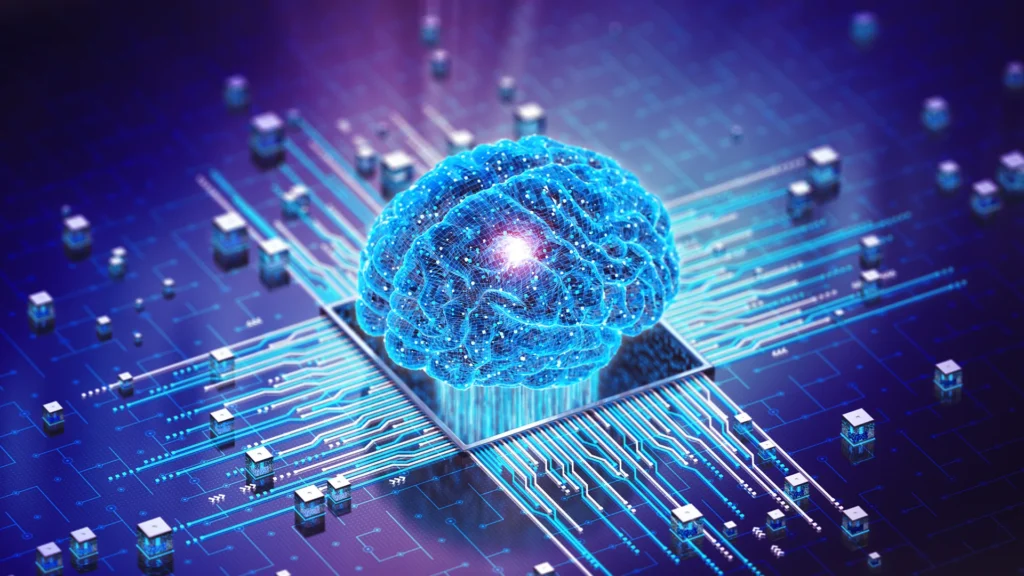Scientists use human mini-brains to power computers in what represents one of the most revolutionary developments in modern technology. This groundbreaking field, known as biocomputing or “wetware,” is transforming how we think about artificial intelligence and computational systems by harnessing the power of living brain tissue rather than traditional silicon chips.
How Scientists Use Human Mini-Brains to Power Computers
The process begins with stem cells originally derived from human skin, which researchers transform into neurons through carefully controlled laboratory procedures. These neurons form tiny clusters called organoids, millimeter-sized balls of brain tissue containing between 50,000 and 100,000 living cells. Scientists use human mini-brains to power computers by attaching electrodes to these organoids, allowing them to monitor electrical activity and send signals that the tissue can process.
Swiss startup FinalSpark has pioneered this technology in its laboratory in Vevey, Switzerland, where these biological processors are kept alive in specialized containers. The organoids’ responses to electrical stimulation, whether they spike with activity or remain quiet, function similarly to the binary ones and zeros in traditional computing.
Remarkable Achievements in Brain Computing
Recent experiments demonstrate why scientists use human mini-brains to power computers rather than relying solely on conventional processors. At Indiana University Bloomington, researchers developed “Brainware,” a hybrid system that successfully performed speech recognition with approximately 78% accuracy. The system distinguished between different speakers’ voices and even solved complex mathematical equations, showcasing computational capabilities that go beyond simple pattern recognition.
Meanwhile, researchers at the University of Bristol used FinalSpark’s organoids to control a simple robot that successfully identified different Braille letters. These achievements prove that biological computing systems can perform practical tasks that traditionally required silicon-based processors.
The Energy Efficiency Revolution
The primary reason scientists use human mini-brains to power computers lies in unprecedented energy efficiency. Training large artificial intelligence models like GPT-3 consumes nearly 1,300 megawatt-hours of electricity, equivalent to 130 U.S. homes’ annual energy consumption. In contrast, the human brain operates on merely 20 watts of power while performing complex cognitive tasks.
“Biological neurons are one million times more energy efficient than artificial neurons,”
explains FinalSpark co-founder Fred Jordan. Research from Johns Hopkins University indicates that biocomputing could reduce energy consumption “by one to a billion times” compared to conventional systems. This efficiency stems from how biological systems process information through decentralized, parallel processing with both electrical and chemical signaling.
Medical Research Applications
Scientists use human mini-brains to power computers not only for computational purposes but also to revolutionize medical research. Brain organoids created from patients’ skin cells allow researchers to study neurological conditions like Alzheimer’s disease, Parkinson’s disease, and autism in unprecedented detail.
“With organoid intelligence, we could study the cognitive aspects of neurological conditions.”
Stated Professor Thomas Hartung from Johns Hopkins University, who led the team that formally introduced the concept in 2023. Organoids from Alzheimer’s patients exhibit disease hallmarks, including amyloid accumulation and neuronal death, providing relevant platforms for testing potential treatments.
Challenges Facing Biological Computing
Despite remarkable progress, significant hurdles remain. Current organoids have limited lifespans due to inadequate nutrient supply to their inner regions. As they grow beyond a few millimeters, their centers begin dying from resource deprivation. Biological systems also exhibit inherent variability, making standardization difficult compared to manufactured silicon chips.
Scientists use human mini-brains to power computers with the understanding that these systems currently perform more slowly than traditional processors for many computational tasks. Additionally, organoids require continuous supplies of nutrients, oxygen, waste removal, and precise temperature control, demands that add complexity and cost.
Ethical Considerations and Future Outlook
The most profound challenge involves ethics, particularly whether brain organoids could develop consciousness. Most experts believe current organoids lack the capacity for subjective experience, as they lack sensory inputs and integrated brain architecture. However, as these systems grow more complex, researchers are developing proactive ethical frameworks to address potential concerns.
FinalSpark currently offers remote access to its bioprocessors through its Neuroplatform, allowing ten universities worldwide to conduct experiments. While scientists use human mini-brains to power computers today in limited laboratory settings, the vision of widespread biological computing remains years away. Researchers suggest scaling up to 10 million neurons will be necessary to achieve meaningful commercial applications.
This convergence of biology and technology challenges our understanding of intelligence itself, promising solutions to computational challenges that silicon alone cannot address.
Also Read: China, Pakistan Launch AI-Powered App for Smart Farming



